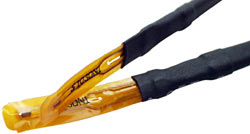amkdeath
0
- Joined
- Oct 28, 2007
- Messages
- 2,631
- Points
- 48
Hey guys, sorry for double post:
I had another question, I was browsing ebay, and the smallest LCD panel ammeter I could find was This.
The problem is it's resolution is only 0.1A. Any suggestions on any modifications I can make to the input (I.e. measuring current through a certain component) to magnify the reading the ammeter gets (so the ammeter would read 250mA as 2.5A, etc).
But even still that would be a discomfort... Does anyone know where I can get an LCD ammeter that is like +-1A max and 0.001A Resolution?
Regards,
amk
EDIT: lol nvm I guess they are all listed as "AMP meters" on ebay not "Ammeters"
I had another question, I was browsing ebay, and the smallest LCD panel ammeter I could find was This.
The problem is it's resolution is only 0.1A. Any suggestions on any modifications I can make to the input (I.e. measuring current through a certain component) to magnify the reading the ammeter gets (so the ammeter would read 250mA as 2.5A, etc).
But even still that would be a discomfort... Does anyone know where I can get an LCD ammeter that is like +-1A max and 0.001A Resolution?
Regards,
amk
EDIT: lol nvm I guess they are all listed as "AMP meters" on ebay not "Ammeters"
Last edited:






